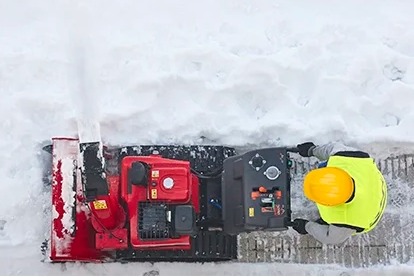Winter in New York City brings its own unique set of challenges for property owners and managers. From managing snow removal to ensuring heating systems are running efficiently, the winter season demands proactive planning and timely action to maintain tenant safety and comfort. Here’s a comprehensive guide to help you navigate winter maintenance effectively.
1. Snow Removal: Stay Compliant and Safe
Snowstorms in NYC can disrupt daily life and create potential hazards for property owners and tenants. Here’s how to stay ahead:
- Know the Rules: NYC law requires property owners to clear snow and ice from sidewalks within a specific time after a snowfall ends—usually by 11 AM if the snow stops overnight or within four hours if it ends during the day. Non-compliance can result in fines.
- Invest in the Right Tools: Equip yourself with snow shovels, salt spreaders, and snow blowers. Consider contracting professional snow removal services before the season begins.
- De-icing Essentials: Use environmentally friendly de-icing agents like calcium magnesium acetate, which are less damaging to concrete and safer for pets.
Pro Tip: To prevent re-freezing, ensure you remove slush and standing water after clearing snow.
2. Heating System Maintenance: Keep Warm and Save Energy
Maintaining your heating system is not just a comfort issue—it’s a legal obligation. NYC law mandates that landlords provide heat between October 1 and May 31. Here’s how to ensure your system is up to the task:
- Schedule a Pre-Winter Check-Up: Hire a licensed HVAC technician to inspect your boiler, furnace, or heat pump. They can clean components, replace filters, and ensure everything is operating efficiently.
- Bleed Radiators: If your property uses steam radiators, bleeding them can help eliminate trapped air, improving heat distribution.
- Monitor Indoor Temperatures: NYC requires indoor temperatures to be at least 68°F between 6 AM and 10 PM if the outdoor temperature drops below 55°F and at least 62°F overnight, regardless of the outdoor temperature.
Pro Tip: Seal windows and doors with weather stripping or caulk to prevent heat loss and lower energy bills.
3. Ice Prevention: Reduce Risks and Liability
Ice buildup can pose serious safety risks to pedestrians and tenants while exposing property owners to liability. Here’s how to mitigate the risk:
- Inspect Gutters and Downspouts: Ensure gutters are clear of debris before winter to prevent ice dams. Use heated gutter systems for added protection.
- Use Anti-Slip Mats and Treads: Place anti-slip mats on outdoor stairs and ramps. Apply sand or cat litter for traction in icy areas.
- Proactively Apply Salt or De-Icer: Don’t wait for ice to form. Pre-treat sidewalks and driveways before a storm to reduce ice formation.
Pro Tip: Check for pooling water near walkways or driveways, as these areas are prone to freezing overnight.
4. Emergency Preparedness: Be Ready for the Unexpected
Winter storms can cause power outages and other emergencies. Preparation is key:
- Stock Up on Supplies: Keep shovels, salt, flashlights, and extra heating fuel or batteries on hand.
- Install Backup Power: A portable generator can keep critical systems running during outages.
- Communicate with Tenants: Share emergency contact information and update tenants on snow removal schedules or other plans.
5. Legal and Insurance Considerations
Winter accidents, like slips and falls, can lead to lawsuits. Protect yourself with these steps:
- Document Maintenance Efforts: Keep a log of snow removal and ice treatment to show you’ve met legal obligations.
- Review Your Insurance: Ensure your property insurance covers winter-related liabilities.
- Hire Insured Contractors: If you outsource property maintenance tasks, verify that contractors carry adequate insurance coverage.
6. Sustainable Winter Practices
Being eco-friendly doesn’t have to be difficult. Use these tips to minimize environmental impact during winter:
- Choose Green De-Icers: Opt for products labeled safe for the environment, pets, and vegetation.
- Optimize Energy Use: Install programmable thermostats to reduce energy waste when spaces are unoccupied.
- Recycle Melted Snow: Use collected snowmelt for watering plants or cleaning outdoor spaces.
Final Thoughts
Managing winter property maintenance in NYC requires careful planning, compliance with local laws, and proactive action to protect your property and those who use it. By following these tips, you can reduce risks, ensure tenant comfort, and preserve your property’s value throughout the season.
Don’t let winter catch you unprepared—start your maintenance plan today to make the colder months a breeze. Contact First Class Management to learn how we can help you manage all your winter maintenance tasks.

